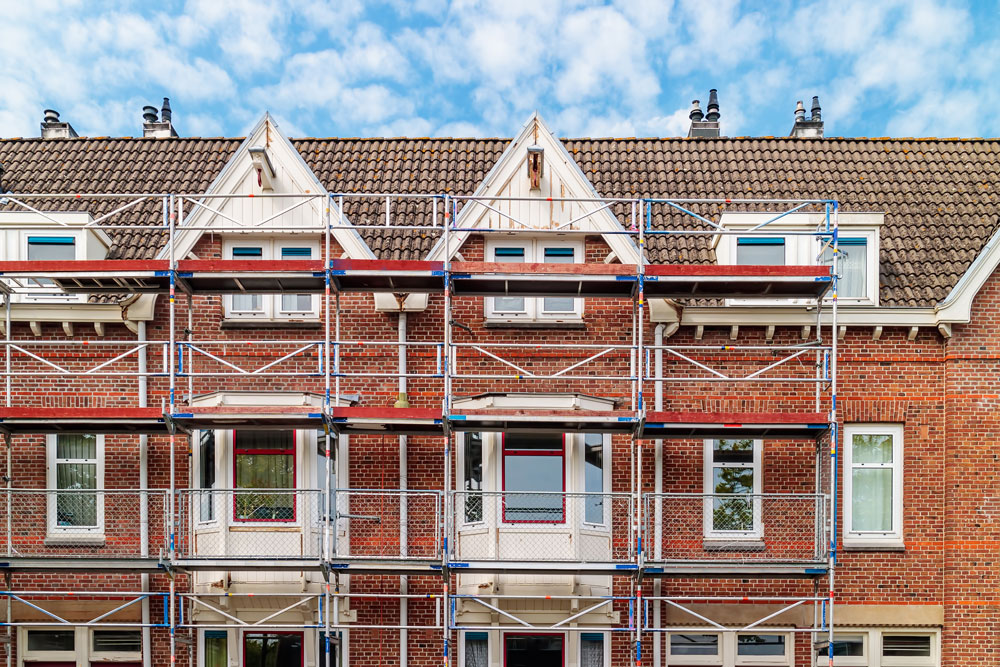Think globally, rebuild locally
Think globally, rebuild locally MIT News


Building Construction and the Reuse of Materials: A Path to Achieving Sustainable Development Goals

Building construction accounts for a significant portion of greenhouse gas emissions, with approximately 36 percent of carbon dioxide emissions and 40 percent of energy consumption in Europe. Recognizing the environmental impact, the European Union has implemented regulations regarding the reuse of building materials. In line with this, cities like Amsterdam are taking steps to incorporate more material reuse into construction practices. The city aims to reduce its raw material use by half by 2030, while the Netherlands as a whole envisions a “circular economy” based on completely reused materials by 2050.
Optimizing Material Reuse in Construction: The Case of Amsterdam
A recent study focusing on Amsterdam explores the most effective system for organizing the reuse of construction waste. The study, published in NPJ Nature Urban Sustainability, suggests that the optimal approach involves establishing multiple local storage “hubs” to keep materials within close proximity to where they will be needed. These findings provide valuable insights for policymakers in Amsterdam to strategize land use effectively and prioritize key locations for future circular economy initiatives.
Connecting Climate Change and Urban Planning
This study contributes to the emerging research area that connects climate change and urban planning. The issue of where to store reusable building materials between demolition and new construction is crucial, as it has significant implications for transportation. The study examines the best sites for material storage and explores whether there should be a single hub, multiple hubs, or an optimal number of hubs that may change over time.
Examining the Geographic Scale of Material Reuse
Previous studies have explored the scale at which the circular economy of reused materials can operate effectively. Some suggest that very local circuits of materials recycling make the most sense, while others propose regional-scale recycling with a distribution radius of 30 miles or more. Global-scale reuse has also been considered to some extent. This study adds to the examination of the best geographic scale for reusing construction materials, specifically focusing on timber reuse in the Amsterdam metropolitan area.
Optimal System for Amsterdam: Localized Networks of Timber Hubs
The research findings indicate that Amsterdam’s optimal system for material reuse involves 29 timber hubs, each serving a radius of approximately 2 miles. This configuration achieves a 95 percent reduction in CO2 emissions while maintaining logistical and economic benefits. The study emphasizes the importance of localized networks for keeping construction materials in use, rather than relying on a single large hub or one hub per construction site.
Informing Decisions in Urban Planning
The study aims to spark discussions about the location and scale of circular hubs and highlights the potential of utilizing location data on materials to inform decisions in urban planning. By considering the optimal number and location of storage sites, policymakers can make more informed decisions in advancing the circular economy agenda in urban contexts.
Implications for Climate Policymakers, Urban Planners, and Businesses
The research findings have implications for climate policymakers, urban planners, and businesses involved in implementing the circular economy in the construction industry. Understanding the dynamics of materials reuse and identifying cost-effective strategies can contribute to achieving the Sustainable Development Goals (SDGs) related to climate action, sustainable cities and communities, and responsible consumption and production.
The research was supported, in part, by the European Union’s Horizon 2020 research and innovation program.
SDGs, Targets, and Indicators
1. Which SDGs are addressed or connected to the issues highlighted in the article?
- SDG 11: Sustainable Cities and Communities
- SDG 12: Responsible Consumption and Production
- SDG 13: Climate Action
The article discusses the reuse of building materials in construction and its impact on greenhouse gas emissions and energy consumption. This aligns with SDG 11, which focuses on creating sustainable cities and communities. Additionally, the article mentions the concept of a circular economy and reducing raw material use, which relates to SDG 12 on responsible consumption and production. The reduction of CO2 emissions through optimized material reuse also contributes to SDG 13 on climate action.
2. What specific targets under those SDGs can be identified based on the article’s content?
- SDG 11.6: By 2030, reduce the adverse per capita environmental impact of cities, including by paying special attention to air quality, municipal and other waste management.
- SDG 12.2: By 2030, achieve the sustainable management and efficient use of natural resources.
- SDG 13.2: Integrate climate change measures into national policies, strategies, and planning.
The article highlights the need for efficient material reuse systems in construction to reduce environmental impacts. This aligns with SDG 11.6, which aims to reduce the adverse environmental impact of cities, including waste management. The focus on circular economy principles and reducing raw material use also supports SDG 12.2 on sustainable resource management. Additionally, integrating climate change measures into urban planning, as discussed in the article, contributes to SDG 13.2.
3. Are there any indicators mentioned or implied in the article that can be used to measure progress towards the identified targets?
- CO2 emissions reduction
- Logistical factors
- Economic benefits
- Number of storage hubs
- Radius of service for each hub
The article mentions several indicators that can be used to measure progress towards the identified targets. These include the reduction in CO2 emissions achieved through optimized material reuse, logistical factors such as transportation costs, economic benefits associated with increased hubs, and the number and radius of storage hubs required for efficient material reuse.
SDGs, Targets, and Indicators
| SDGs | Targets | Indicators |
|---|---|---|
| SDG 11: Sustainable Cities and Communities | 11.6: By 2030, reduce the adverse per capita environmental impact of cities, including by paying special attention to air quality, municipal and other waste management. | – CO2 emissions reduction – Logistical factors – Economic benefits – Number of storage hubs – Radius of service for each hub |
| SDG 12: Responsible Consumption and Production | 12.2: By 2030, achieve the sustainable management and efficient use of natural resources. | – CO2 emissions reduction – Logistical factors – Economic benefits – Number of storage hubs – Radius of service for each hub |
| SDG 13: Climate Action | 13.2: Integrate climate change measures into national policies, strategies, and planning. | – CO2 emissions reduction – Logistical factors – Economic benefits – Number of storage hubs – Radius of service for each hub |
Behold! This splendid article springs forth from the wellspring of knowledge, shaped by a wondrous proprietary AI technology that delved into a vast ocean of data, illuminating the path towards the Sustainable Development Goals. Remember that all rights are reserved by SDG Investors LLC, empowering us to champion progress together.
Source: news.mit.edu

Join us, as fellow seekers of change, on a transformative journey at https://sdgtalks.ai/welcome, where you can become a member and actively contribute to shaping a brighter future.







